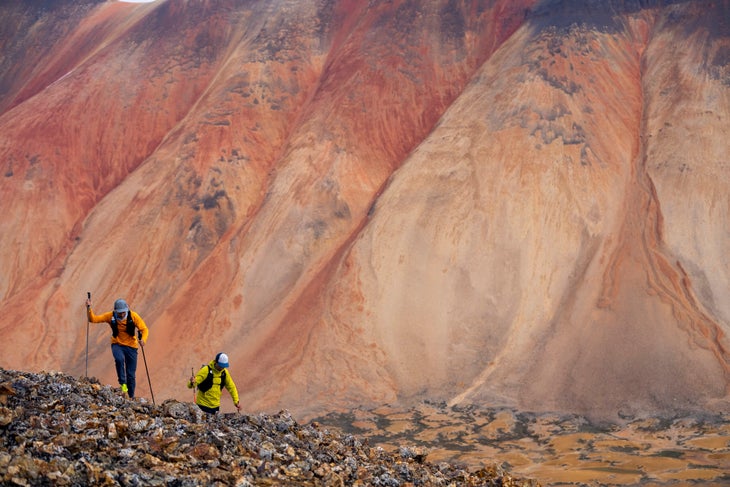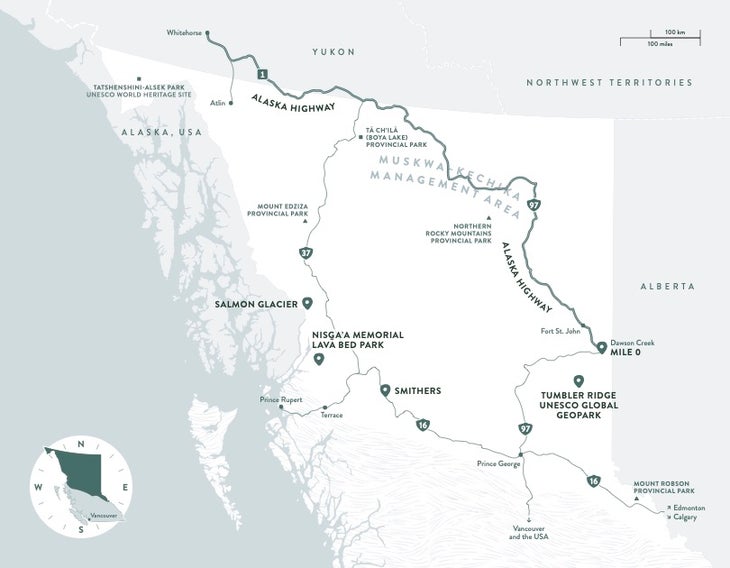Venture off the beaten path to northern British Columbia, where you’ll explore seemingly endless backcountry, meet diverse Indigenous peoples, and encounter a world of wildlife
If you dream about destinations where towering mountains, dense boreal forests, and glacier-fed lakes stretch from horizon to horizon, set your sights on , a place for truly one-of-a-kind outdoor adventures. Located in the far north of British Columbia, Canada, this vast region, home to Indigenous Peoples since time immemorial, is a prime example of nature in its purest form. Here, the opportunity for adventure is as big as your ambition.

Experience what real solitude feels like in the multihued mountains of the Spectrum Range in Tenh Dẕetle Provincial Park (Mount Edziza Provincial Park). Answer the call of the meandering Tatshenshini River, where wild salmon still return to spawn—drawing grizzly bears and eagles to the banks of the river. Or marvel at nature’s immensity in the marshy lowlands, high alpine plateaus, and rugged mountains across 2,656 roadless square miles in Spatsizi Plateau Wilderness Park.
Ready to plan your own exploration of The Great Wilderness? These three experiences call to the most adventurous spirits.

Connect with the Rich Heritage of the Nisg̱a’a Lands
Visitors to the Nisg̱a’a Lands, near the southeastern border of the Alaska Panhandle, are often astounded when they first spot the area’s vast plains of lava. Covered in striking gold-colored lichen and moss, they’re the result of volcanic activity around 1700, when the Tseax Cone eruption created a lava flow that spread 20 miles northward. The eruption destroyed two Nisg̱a’a villages and, according to oral history, claimed approximately 2,000 community members, leaving a razed landscape of flat plains broken by hill-sized heaps of rubble and deep potholes filled with aquamarine river water.
Framed by the snow-capped Hazleton Mountains, Anhluut’ukwsim Lax̱mihl Angwinga’asanskwhl Nisg̱a’a (Nisg̱a’a Memorial Lava Bed Provincial Park) is part of Nisg̱a’a Lands. Follow the , which connects visitors to Nisg̱a’a villages, with cultural and scenic stops, including waterfalls, hot springs, drowned forest, and trailheads—providing Indigenous context to your experiences along the way. In Laxgalts’ap, one of four active Nisg̱a’a villages, visit the Hli Goothl Wilp-Adokshl Nisg̱a’a (Nisg̱a’a Museum) to learn about the rich heritage and traditions of the Nisg̱a’a Nation. Join a or watch carry on the legacy of their ancestors, carving feast bowls, pts’aan (totem poles), canoes, and other works of art. Then head to Gitwinksihlkw and cross the Nass River on the 400-foot pedestrian suspension bridge, which was the only access point to the village until 1995. Pedal the , a five-mile network of nine mountain biking trails with some of the best flows in the region. Don’t miss the panoramic views of the lava beds along the route. Then hike through old-growth forest to the rim of the Tseax Cone, which takes about four hours round-trip.









